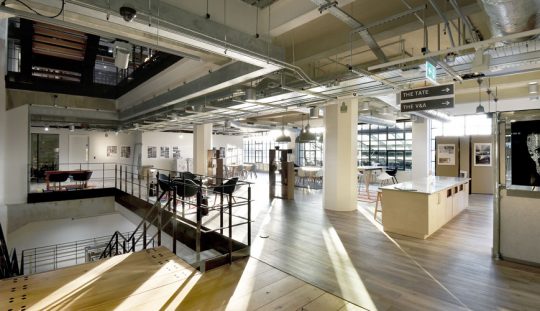
This article by Simon Marett, Director, LOM Architecture and Design, originally appeared in FX Magazine’s October 2017 issue.
We work in an age where the facilities manager is now a key client contact. I remember turning around in a meeting several years ago to see a Facilities Manager emerge from behind the meeting room door, where he’d been waiting until a demanding ‘stakeholder’ had safely passed by, along with his urgent need for instant delivery of thirty new desks. This seemed to me to be the Facilities Manager’s unfortunate lot: a relentless, pressurised day-to-day response to crises.
I checked this impression recently with Andrew Neale, Head of Facilities at Tesco Stores, whose comment was “In my early FM life the role was mainly based around the provision of services in operating office buildings – soft and hard services and some procurement activity for corporate services like business travel”.
So, for the architect, or designer: little opportunity to offer much more than a speedy space planning service – interior design rarely a priority, and workplace strategy a rarely implemented ambition. In fact architects and designers would have been focussed elsewhere to secure projects arising from new developments, or large scale office moves. The frustrated Facilities Manager may well not even have been part of the core team at project outset for larger projects, perhaps joining later to comment on designs already approved in principal by the executive.
How the picture has changed now, if I look at the projects LOM has supported in recent months and years: The most significant change has been that businesses now recognise the value of a well-considered underlying strategy for the workplace, not just to accommodate projected staff numbers, but to make efficient use of space, new ways of working, and emerging technology and trends. These are, in turn, key to delivering superb design, and not just because from a strategy you can develop a business case to justify creating a quality working environment: an intelligent workplace strategy will also form the core client brief and lead you towards a clever, efficient, functional, stimulating workplace environment.
The interesting thing is that, emerging from behind the meeting room door, the Facilities Manager is often the champion of this change in attitude towards workplace design projects. We now often work with senior members of the facilities team to develop feasibility studies, business cases and then to deliver projects, where the Facilities Manager will be the direct conduit to senior executives or the board.
Looking at this from the Facilities Manager’s point of view; the necessity is now for them to be ‘on their game’. Many in the FM teams we work with now have a design or property back-ground. For them delivering quality ‘look & feel’ is the minimum pre-requisite. For manging high profile, business critical projects, an underlying strategy for design is key to their professional management of the workplace.
“From my own experience the role of the FM has developed over the past 10 – 15 years. You are now high profile internally as you commit to programmes of work and significant expenditure, and being held very much to account for the delivery. What you will be delivering will be aligned to the corporate direction and will have been agreed at board level” Andrew Neale, Head of Facilities at Tesco Stores.
From the architect, or designer’s point of view this is good news: there are lots of designers who can deliver a nice looking interior, but not so many that also have a talent for helping the Head of Facilities show a CEO how best to make their workplace really work. So, this is an opportunity for us to differentiate ourselves and to show how great design can be demonstrated to have real value.
